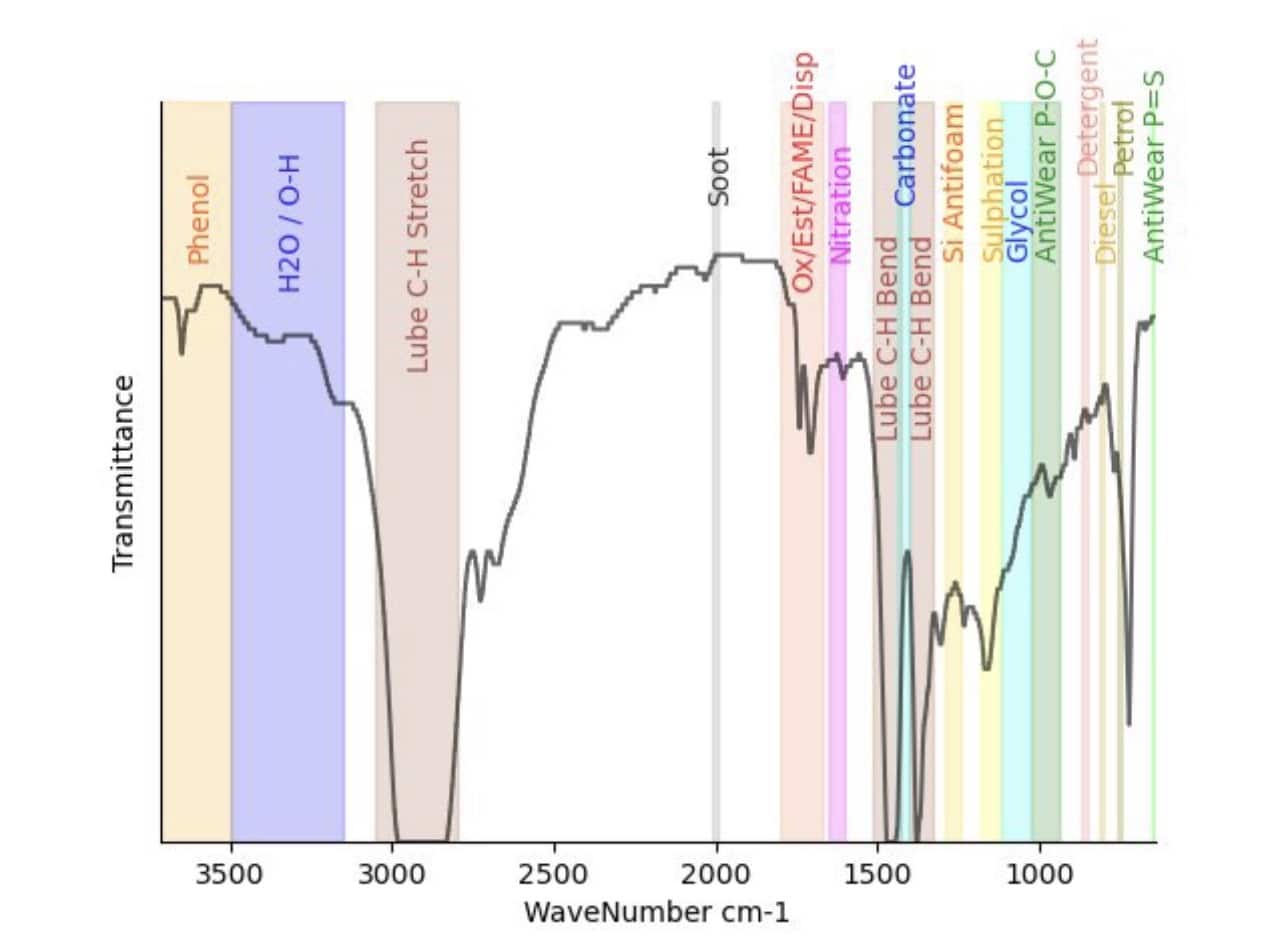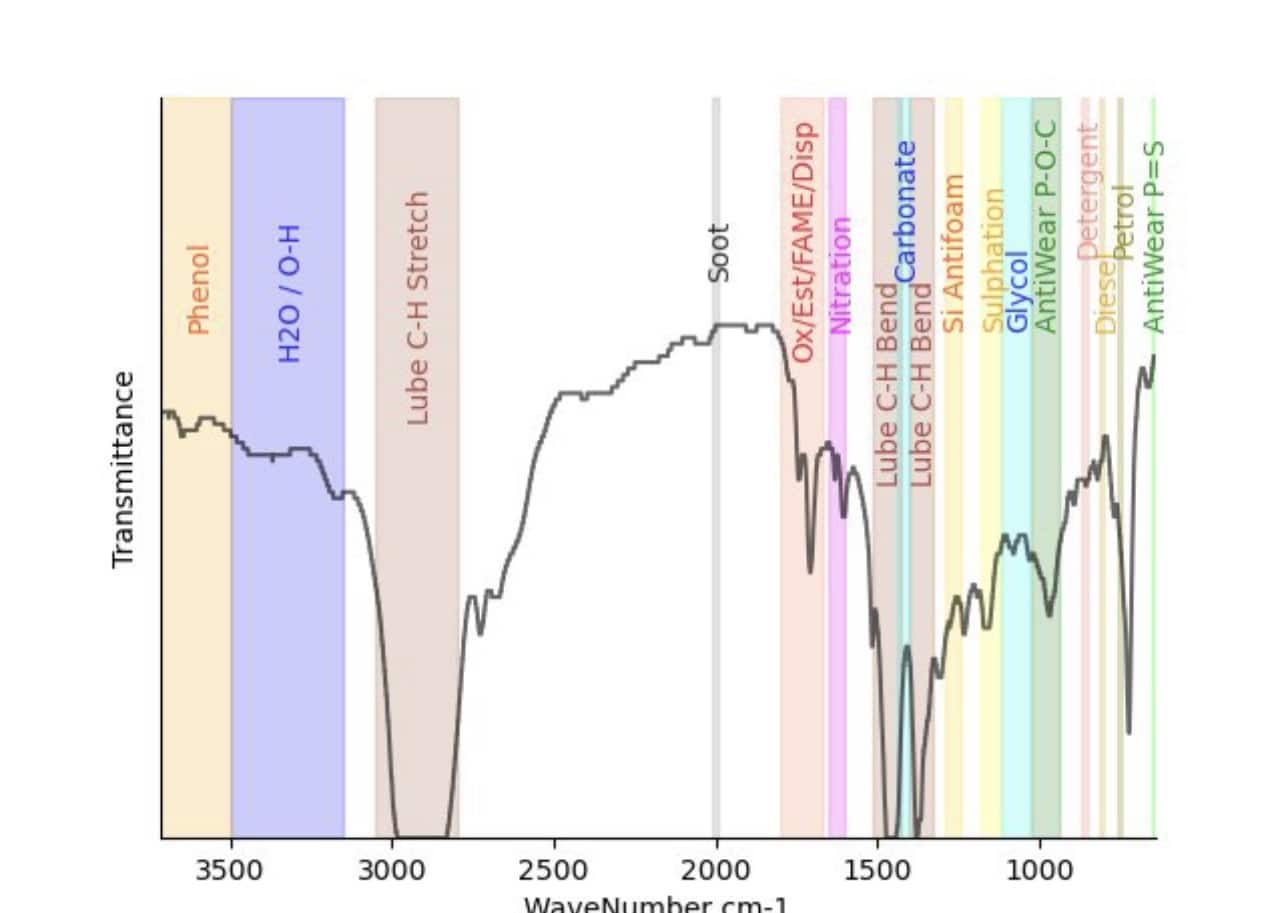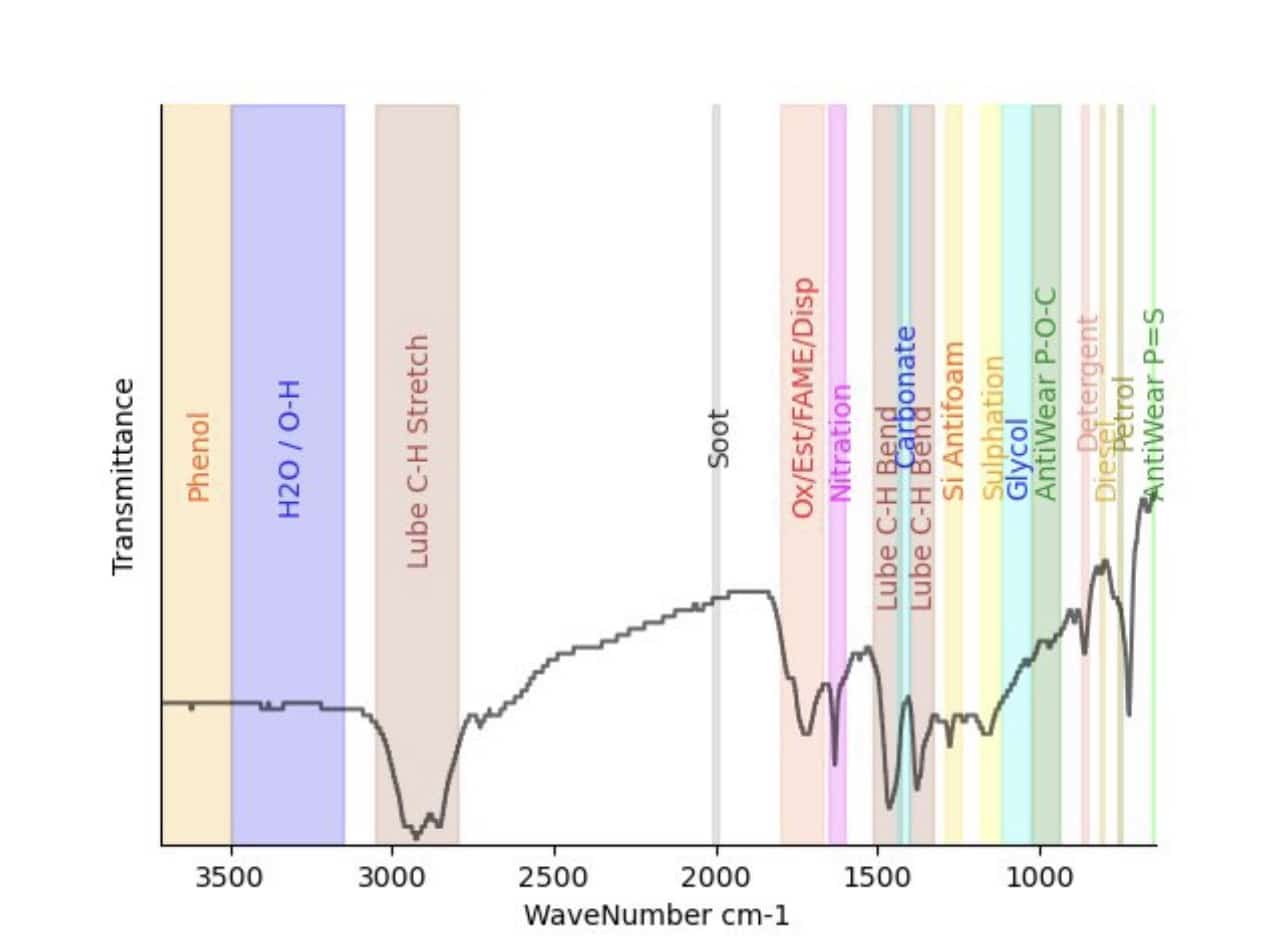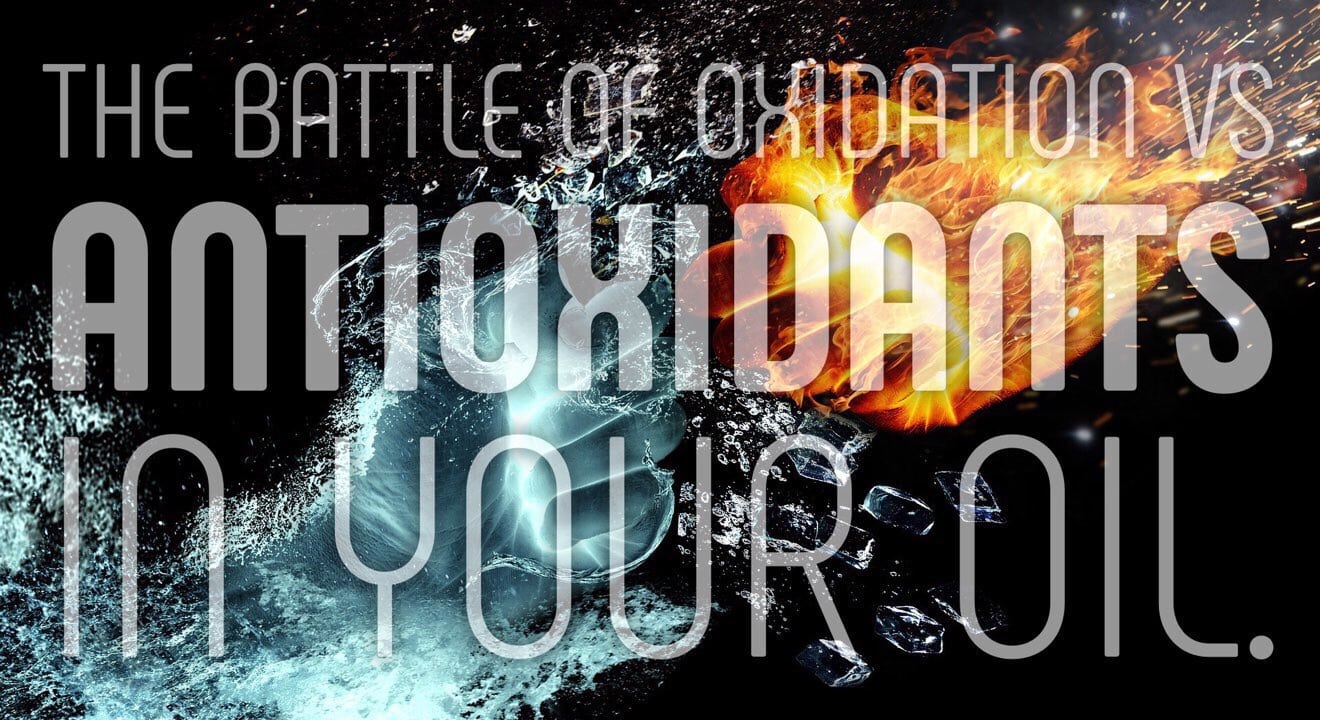We all get old – right? Part of the reason we age is down to oxidative processes and their effects on our cells. You may have seen news articles about superfoods and their antioxidant properties to help slow down the oxidation processes and boost a healthier life. However, you may not be aware these same problems occur in your oil.
This article will answer the following questions
-
What is an antioxidant in my oil?
-
What are phenols and amines in my oil doing?
-
Why do oils need changing?
-
Why is my oil not lasting as long?
-
Why do synthetics usually last longer than mineral oils?
What is oxidation of a lubricating oil?
So let’s start by answering the burning question (pardon the pun), but what is oxidation? Oxidation in chemistry is defined as the loss of electrons or increase in oxidation state of an atom within a molecule. However put simply it’s the adding oxygen to your oil, which eventually leads to thickening, sludging and darkening of the fluid. It also leads to an increase in acid formation, termed the Acid Number (AN), historically referred to as TAN (Total Acid Number). The ultimate end result of extreme oxidation is carbon dioxide and Water (i.e. burning of the oil, hence the burning question pun).
What makes a lube oil suspectible to oxidation?
So let’s start with a mineral oil. A basic mineral oil that has received very little refining, (which is quite a rare sighting these days) contains much of the same properties as its crude oil source.
If you go back millions of years to when crude was made from the extreme pressure on the dead bodies of millions of sea creatures, crude can only contain the elements from these creatures, which are much the same as you or I. They contain Carbon, Hydrogen, Oxygen, Sulphur etc. These are all present in crude. The arrangements of all these elements are also in weird and wonderful shapes including ring shapes called aromatic, straight chains called paraffinic and coiled chains called Naphthenics. The bonding (a bond is a pair of electrons between two atoms) is also in many forms; including single, double, half way between single and double with aromatics, and even triple bonds between some of the elements.
The combination of predominantly carbon and Hydrogen with some other elements such as oxygen and sulphur impact some very useful properties. Sulphur, for instance is great for antiwear in that all the traditional additives use it. Aromatics, double bonds and anything non-carbon to hydrogen bonds, double and triple bonds makes the oil have good organic solvent properties to dissolve up sludges. Naphthenics base stocks have great pour point properties so they can be used in very cold temperatures and are natural fridge compressor oils. An explanation of chemistry behind these properties is listed below in smaller text as further information.
Chemistry focus why Naphthenics have great pour points and aromatics are great solvents: For those wanting a little extra detail, aromatics, I.e. anything containing benzene (a 6 membered carbon ring with a central ring of electrons) are great solvents and dissolve sludges and deposits in the oils. To answer this question we all know oil and water don’t mix easily, this is because they are non similar and the chemistry rule of like dissolves like applies. Sludges are not normally soluble in highly saturated paraffinic oils because sludges are oxidation products and contain organic acid groups, which are not as oil soluble. However with water they are often still too oily to be soluble in that too. Aromatics are organic compounds that contain an electron ring that readily dissolve these acid groups of the sludges. Double bonds have additional electrons that also help dissolve sludges too. Hence highly refined oils although less likely to form varnish are very poor at handling any that forms. On the other question I asked, of why Naphthenics have great pour points. If you think of a very cold oil forming waxes, you can picture the crystal structure as a brick wall. Straight chains are much easier to stack, but the 5 membered ring structure of Naphthenics makes them very awkward to stack and so they naturally collapse, which has the effect of suppressing wax crystal formation. If you play Lego at home with your kids try stacking awkward shaped bricks in the middle of the wall and see what happens. You are in fact simulating what happens when pour depressants are added to oils.
Chemistry focus why Naphthenics have great pour points and aromatics are great solvents: For those wanting a little extra detail, aromatics, I.e. anything containing benzene (a 6 membered carbon ring with a central ring of electrons) are great solvents and dissolve sludges and deposits in the oils. To answer this question we all know oil and water don’t mix easily, this is because they are non similar and the chemistry rule of like dissolves like applies. Sludges are not normally soluble in highly saturated paraffinic oils because sludges are oxidation products and contain organic acid groups, which are not as oil soluble. However with water they are often still too oily to be soluble in that too. Aromatics are organic compounds that contain an electron ring that readily dissolve these acid groups of the sludges. Double bonds have additional electrons that also help dissolve sludges too. Hence highly refined oils although less likely to form varnish are very poor at handling any that forms. On the other question I asked, of why Naphthenics have great pour points. If you think of a very cold oil forming waxes, you can picture the crystal structure as a brick wall. Straight chains are much easier to stack, but the 5 membered ring structure of Naphthenics makes them very awkward to stack and so they naturally collapse, which has the effect of suppressing wax crystal formation. If you play Lego at home with your kids try stacking awkward shaped bricks in the middle of the wall and see what happens. You are in fact simulating what happens when pour depressants are added to oils.
However, there is a reason that oils are refined to remove or synthetically made without some of these properties of the crude extracts such as sulphur or double bonds and that is they are very prone to oxidation as they are great sites for oxygen to attack. Boring old single bonds of Carbon to carbon or carbon to Hydrogen (termed saturated molecules) are fairly unreactive by comparison (a brief explanation of why this is so is below for those who are curious)
Chemistry focus why Non- carbon-carbon and carbon-Hydrogen bonds are easier to oxidise:
Imagine you are in a tug of war with a handkerchief tied to the middle of the rope to identify who is the winner. If both sides of the tug of war are equally matched the handkerchief stays in the middle equally attracted to both teams. If we exchange the handkerchief for a pair of electrons and the two teams for carbon and hydrogen or two carbons we have our chemical covalent bond. For those still awake at this point the reason for the oxygen being more readily able to attack the non-Carbon to Carbon and non-Carbon to hydrogen bonds is these possess a slight difference in charge between the bond ends called a dipole. Imagine we added to one team a former tug of war champion called Sulphur Bondalot, the balance has shifted so the handkerchief favours one team, but the other team have not yet had the rope pulled from their hands or gone over the line. This is effectively a dipole, a constant state where one team is winning, but not yet won. Since oxidation is loss of electrons, this dipole means the electrons have a preference to one atom or another meaning it is easier to tip the balance in favour of the winning team, break the bond and hence for oxidation to occur.
Chemistry focus why Non- carbon-carbon and carbon-Hydrogen bonds are easier to oxidise:
Imagine you are in a tug of war with a handkerchief tied to the middle of the rope to identify who is the winner. If both sides of the tug of war are equally matched the handkerchief stays in the middle equally attracted to both teams. If we exchange the handkerchief for a pair of electrons and the two teams for carbon and hydrogen or two carbons we have our chemical covalent bond. For those still awake at this point the reason for the oxygen being more readily able to attack the non-Carbon to Carbon and non-Carbon to hydrogen bonds is these possess a slight difference in charge between the bond ends called a dipole. Imagine we added to one team a former tug of war champion called Sulphur Bondalot, the balance has shifted so the handkerchief favours one team, but the other team have not yet had the rope pulled from their hands or gone over the line. This is effectively a dipole, a constant state where one team is winning, but not yet won. Since oxidation is loss of electrons, this dipole means the electrons have a preference to one atom or another meaning it is easier to tip the balance in favour of the winning team, break the bond and hence for oxidation to occur.
What factors increase the rate of oxidation?
- Temperature – for every 10 degrees you increase the oil temperature you half the life of the oil.
- Exposure to air including tendency to air entrainment does increase risks of oxidation
- Catalysts such as wear metals and contamination.
- Base oil type with the highly refined and synthetics more resistant to oxidation.
- Degree of already existing oxidation biproducts which promote further oxidation. Hence why adding oils as partial oil changes is not very cost effective as the oil just reverts to the worse part of the oil quite quickly after the partial oil change.
So how do antioxidants stop this?
I will start with a simple explanation of the different antioxidant types and how they work followed by a little more detail for those who are interested.
The main 4 categories of antioxidant are.
- Phenolic antioxidants: They donate a hydrogen atom to harmful, reactive molecules called free radicals, making them stable and preventing further damage to the oil.
- Amine antioxidants: They neutralize harmful molecules formed during the oxidation process, interrupting the chain reaction and protecting the oil from degradation.
- Combination phenol and amine antioxidants: They work together, combining the benefits of both phenolic and amine antioxidants, to provide even better protection against oxidation.
- ZDDP: This additive not only helps protect against oxidation by neutralizing harmful molecules but also forms a protective film on metal surfaces to reduce wear and exposure to oxygen.
And for those wanting brownie points for extra learning detail here is the more detailed answer.
Phenolic antioxidants are widely used in lubricating oils due to their excellent oxidation resistance. These compounds work by donating a hydrogen atom from the hydroxyl group (-OH) to free radicals, which are highly reactive and cause oxidation. The phenolic antioxidant then forms a stable, less-reactive radical, thereby preventing the initiation and propagation of oxidative chain reactions. Examples of phenolic antioxidants include butylated hydroxytoluene (BHT) and butylated hydroxyanisole (BHA).
Amine antioxidants, also known as alkylated diphenylamines, are another class of antioxidants used to reduce oxidation in lubricating oils. They function by scavenging peroxy radicals and decomposing hydroperoxides, which are formed during the oxidation process. The amines react with these radicals, creating stable, non-radical products and interrupting the oxidative chain reaction. Cyclical amines, such as phenothiazine and p-phenylenediamine derivatives, are also employed as oxidation inhibitors.
Combination phenol and amine antioxidants are formulated by blending phenolic and amine compounds to offer synergistic effects in combating oxidation. The phenolic component donates a hydrogen atom to free radicals, while the amine component scavenges peroxy radicals and decomposes hydroperoxides. This dual-action approach provides enhanced oxidation protection, thereby increasing the overall effectiveness and stability of the lubricating oil.
Lastly, Zinc Dialkyl Dithiophosphate (ZDDP) is a widely used antioxidant and anti-wear additive in lubricating oils. ZDDP functions by forming a protective film on metal surfaces, which reduces wear and acts as a thermal and oxidative barrier. During the oxidation process, ZDDP decomposes to release phosphorus, sulfur, and zinc ions that react with radicals, effectively neutralizing them and hindering further oxidation. The combination of antioxidant and anti-wear properties makes ZDDP a crucial component in many lubricating oil formulations.
Measurement of antioxidants in oils methods.
So how does the lab tell how much antioxidant is in your oil. Well there are two commonly established tests used for antioxidant and oxidation resistance.
RBOT / RPVOT – gold standard but slow and expensive. Internationally comparable values between oils. Used to be stated on the product data sheets for many products. However this test can be cheated by oil companies by adding copper deactivator additives to the oil that hinder the testing process.
RULER / linear sweep voltammetry – faster, but only measures the antioxidants and not the base oil which is also a factor of oxidation resistance. They are also not comparable between products or even blend changes or oil mixes.
However that is not the only way to tell if an oil is ageing or needs changing. For instance if you have an engine oil you would work on base number depletion. You can also measure oxidation through infrared spectroscopy.
Measurement of oxidation of an oil by FTIR
FTIR is a technique that uses infrared light to analyse lubricating oils, detecting signs of oxidation and providing information on their chemical makeup. This helps identify potential problems early, ensuring the proper functioning of machinery and equipment.
FTIR can analyse lubricating oils quickly and non-destructively, requiring only a small sample and no extensive sample preparation. This makes it an ideal method for routine monitoring and analysis in various industrial settings.
In more detail, FTIR spectroscopy works by shining infrared light through a sample of lubricating oil and measuring the amount of light that is absorbed at different wavelengths. Since different chemical bonds absorb light at specific wavelengths, the resulting spectrum serves as a unique fingerprint for the molecular structure and composition of the oil. When oxidation occurs, the chemical bonds in the oil molecules change, leading to variations in the absorption spectrum. By comparing the spectrum of a used oil sample to that of a fresh, unoxidized sample, the extent of oxidation can be determined.
One of the most common indicators of oxidation in FTIR analysis is the increase in carbonyl compounds, such as ketones, aldehydes, and carboxylic acids found at about 1700cm-1 on the FTIR spectra. These compounds are formed as a result of the oxidative degradation of the lubricating oil, and their presence can be detected by characteristic absorption peaks in the FTIR spectrum. By monitoring the intensity of these peaks, the progression of oxidation in the oil can be tracked, allowing for timely intervention and maintenance.
FTIR can also be used to detect specific antioxidants in your oil too, so it is very much a Jack of all trades test in the oil analysis industry.
It also gives a good visual indicator of the condition if you can read the trace. It is very much an art in recognising the patterns. My father is very much the guru on this area and can identify compounds in seconds sometimes just by the spectra. I take a little more time and to help customers I developed a good grid to enable customers to look at a trace and spot good and bad oil conditions. So since we are talking about oxidation let’s look at two areas we can spot this on.
How to read a lube oil FTIR trace basics
Below are 3 images of FTIR traces of lubricating oils. When looking at a trace it’s best to know if it’s in absorbance (peaks point upwards) or transmittance (peaks point downwards). Also FTIR traces start from high to low in terms of scale along the bottom x axis to make more confusing. I always use transmittance as that is how I was taught to read a trace, so the peaks point down on these graphs. So first if you look the bigger the peak the more there is. So for instance in the brown area on all 3 traces the biggest peak going off the scale at the bottom of the graph is the C-H peak. That means there is so much carbon to hydrogen bonds that very little to none of the infrared light wavelengths around 3000 got through the sample I.e. was transmitted. That’s because oil is mainly carbon to carbon and carbon to hydrogen bonds. So that makes sense.
To measure oxidation and antioxidant depletion two good places to look are the far left where the common phenol antioxidants sharp peak can be found and the red oxidation can also be found about 1700 from the carbonyl peak of acids c=o. This carbonyl peak area is actually quite a congested space so it also contains additives, biodiesels etc. So it’s good to compare to the new oil when setting limits for oxidation as some oils may start at 50 and others at 5. So a result of 56 may be fine or awful depending on the starting point. Below are a couple examples of various stages of oil degradation as seen by FTIR.
In trace 1 you can see a strong phenol peak and a weak carbonyl peak plus a second peak in that area likely from dispersant additives present.
In the second trace you can see the phenol peak is less sharp and almost gone whilst the oxidation peak has grown and the dispersant additive has shrunk.
Finally you can see the last one although they had to take a thinner thinner path length as the sample was very sooty and full of coolant, the extracted oil was extremely spent with the carbonyl acid group now big and broad compared to previous traces and the antioxidant none existent.



In conclusion, FTIR spectroscopy is an invaluable tool for measuring oxidation in lubricating oils, enabling early detection and prevention of potential issues. With its rapid, non-destructive analysis and minimal sample requirements, FTIR has become an essential method for monitoring the condition of lubricating oils in various industrial applications.
I hope you enjoyed this article on oxidation and antioxidants. To find out more about oil analysis and how to test your oil please reach out by clicking the contact us button on the bottom of this article.


